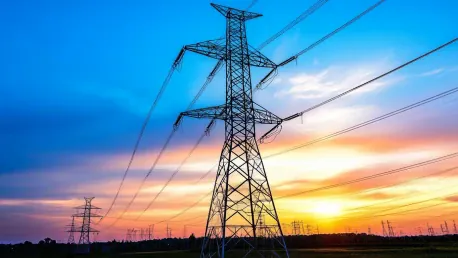In recent years, the Pacific Northwest has transformed into a beacon of energy efficiency, driven by strategic investments that play a pivotal role in balancing the power grid. Emphasizing energy-efficient upgrades such as heat pumps, electric water heaters, solar panels, home insulation, smart thermostats, and energy-efficient lighting, the region is making substantial strides in enhancing grid stability and reliability. This focus on energy efficiency ensures that the region not only meets its energy demands but does so in an environmentally friendly and economically sustainable way, addressing both current needs and future challenges.
Pioneering Energy Efficiency Initiatives
The Northwest Power and Conservation Council’s comprehensive studies have illuminated the profound effects of energy efficiency initiatives on reducing power demand. As evidenced by data from the Bonneville Power Administration and regional utilities, including Pacific Power and Portland General Electric, through the Energy Trust of Oregon, a significant trend emerges. The widespread adoption of cost-effective energy-efficient technologies across commercial, industrial, residential, and agricultural sectors has led to a substantial reduction in power usage. In 2023 alone, these improvements resulted in a reduction of 160 average megawatts of power, showcasing the tangible benefits of investing in energy efficiency.
Encouragingly, the region’s energy efficiency programs are not isolated endeavors but form part of a broader strategy aimed at achieving aggressive targets. The Northwest Power and Conservation Council’s 2021 plan seeks to achieve at least 750 average megawatts of energy efficiency by 2027. Current data suggests that the region is well-positioned to exceed these ambitious goals, which is crucial given the rising energy demands driven by population growth, increased use of electric devices, and a transition from fossil fuels to renewable energy. This strategic approach underscores the importance of energy efficiency as a cornerstone for sustainable development in the Pacific Northwest.
Innovations Driving Energy Efficiency
Key innovative technologies are at the heart of these energy efficiency gains, offering both practical solutions and futuristic advancements that make a significant impact. Heat pumps and electric water heaters, for instance, have proven exceptionally effective in reducing energy consumption within residential and commercial settings. Simultaneously, solar panels and renewable energy storage solutions are redefining how electricity is generated, stored, and utilized, ensuring that the energy remains cleaner and more reliable. These technologies collectively contribute to a more resilient and efficient grid, reducing both costs and emissions.
In addition to these technologies, smart thermostats and high-efficiency lighting systems are revolutionizing how homes and businesses manage their energy use. These smart technologies not only empower consumers by providing real-time data and automated control over their energy consumption but also help utilities and regulators with more accurate forecasting and better management of energy resources. The predictability offered by these smart systems is invaluable in maintaining grid stability, especially as energy demands continue to evolve with technological progress and increased electrification of everyday life.
Community-Centered Energy Solutions
A significant component of the region’s success in energy efficiency comes from community involvement and targeted initiatives that deliver social as well as environmental benefits. For example, the Energy Trust of Oregon’s collaboration with the Confederated Tribes of Grand Ronde exemplifies how community-focused projects can achieve dual objectives. The project involved developing 24 energy-efficient homes for tribal elders, incorporating an array of technologies such as electric appliances, solar panels, renewable energy storage batteries, electric vehicle chargers, heat pumps, and electric heat pump water heaters. This initiative not only reduced overall grid demand but also helped lower utility rates for the community members, illustrating the social equity benefits of energy efficiency.
Such initiatives highlight the broader impact of energy efficiency solutions. They demonstrate that when communities are engaged and supported, the benefits extend beyond just economic savings and environmental sustainability. By making energy-efficient technologies accessible to all members of society, these programs ensure that the transition to a more sustainable energy future is inclusive and equitable. This holistic approach underscores the importance of community-centered strategies in achieving regional and national energy goals.
Challenges and Future Directions
Despite these successes, the Pacific Northwest still faces significant challenges in meeting the increasing demand for renewable electricity. Adding more renewable energy sources, such as solar and wind, is crucial, but addressing these challenges requires more than just incorporating new technologies. The construction of additional transmission lines is also necessary to effectively deliver this new power to where it is needed most. Moreover, integrating these renewable sources into the existing power grid presents a complex set of logistical and technical challenges that must be meticulously planned and managed.
Utilities and regulators must continue to explore comprehensive strategies that encompass all aspects of energy production and consumption. This includes maintaining a delicate balance between increasing renewable sources, enhancing energy efficiency, and building the necessary infrastructure to support a resilient power grid. Innovative planning and robust community engagement will be essential in navigating these challenges and ensuring that energy efficiency continues to play a central role in the region’s energy landscape.
Envisioning a Sustainable Energy Future
In recent years, the Pacific Northwest has emerged as a leader in energy efficiency, thanks to strategic investments that are crucial in maintaining balance within the power grid. By prioritizing energy-efficient solutions like heat pumps, electric water heaters, solar panels, upgraded home insulation, smart thermostats, and LED lighting, the region is significantly improving grid stability and reliability. These efforts go beyond merely meeting current energy demands; they also contribute to a more eco-friendly and economically viable future. By focusing on these upgrades, the Pacific Northwest not only addresses the immediate energy needs but also prepares for future energy challenges. This dual approach ensures that the region remains a model for sustainable living and energy management. The emphasis on energy efficiency not only helps in reducing greenhouse gas emissions but also fosters economic growth by creating jobs in the green energy sector. As a result, the Pacific Northwest continues to set a standard for other regions to follow, blending environmental responsibility with economic stability.









